Active 1999–present Type Command | Country 31 countries Part of NATO | |
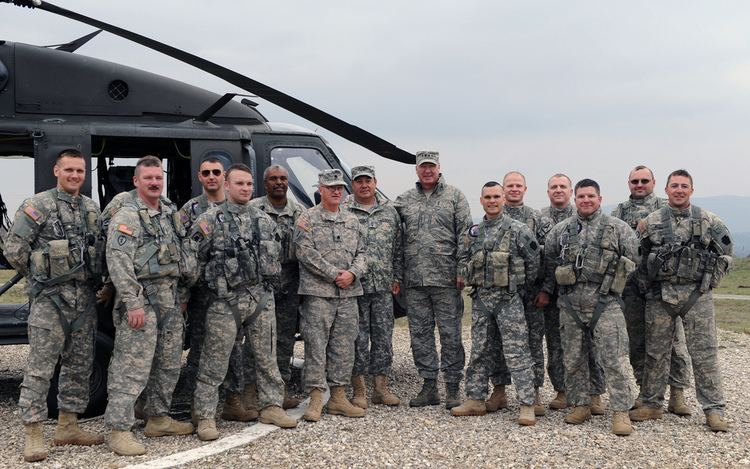 | ||
The Kosovo Force (KFOR) is a North Atlantic Treaty Organisation-led international peacekeeping force which was responsible for establishing a secure environment in Kosovo.
Contents
- Kosovo force builds new bridges
- Objectives
- Structure
- Contributing states
- KFOR Commanders
- Kosovo peacekeeping and human trafficking
- KFOR fatalities
- Events
- References
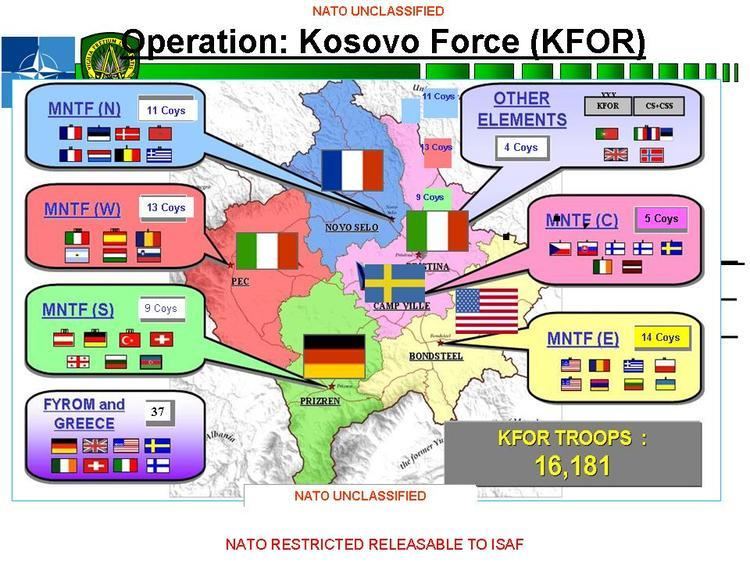
KFOR entered Kosovo on 12 June 1999, two days after the adoption of UN Security Council Resolution 1244. At the time, Kosovo was facing a grave humanitarian crisis, with military forces from the FRY and the KLA in daily engagement. According to NATO, Serb forces had committed ethnic cleansing of Kosovo Albanians. Nearly one million people had fled Kosovo as refugees.

KFOR has gradually transferred responsibilities to the Kosovo Police and other local authorities. As of 23 May 2016, KFOR consisted of 4,600 troops.
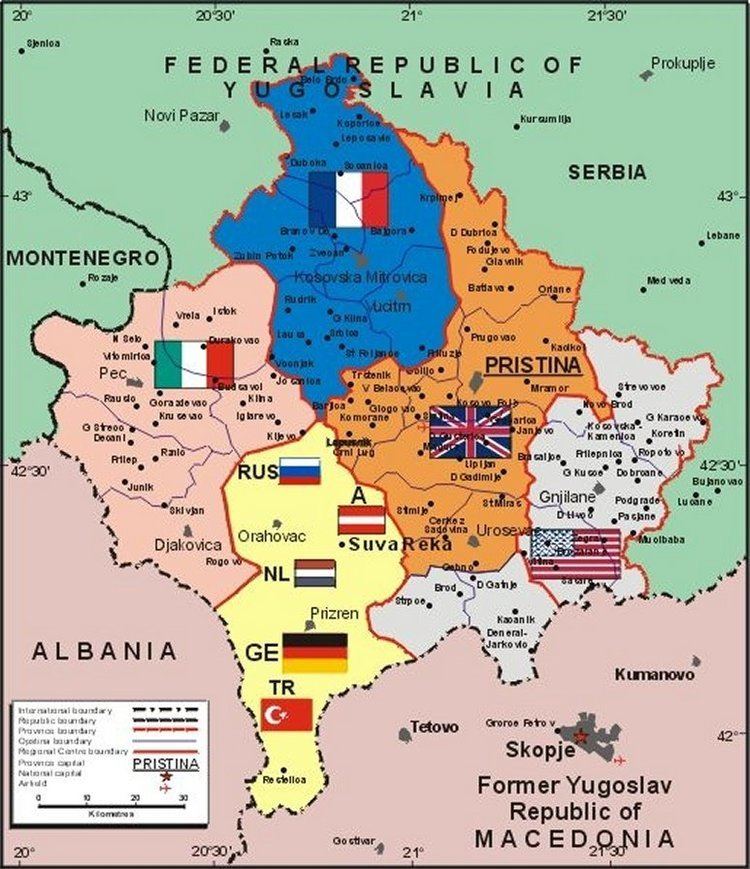
Kosovo force builds new bridges
Objectives
NATO's initial mandate was:
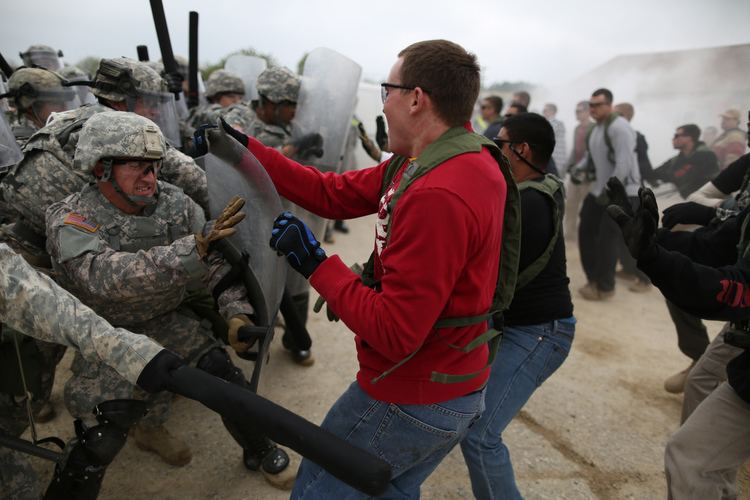

Today, KFOR focuses on building a secure environment in which all citizens, irrespective of their ethnic origins, can live in peace and, with international aid, democracy and civil society are gradually gaining strength. KFOR tasks have included:
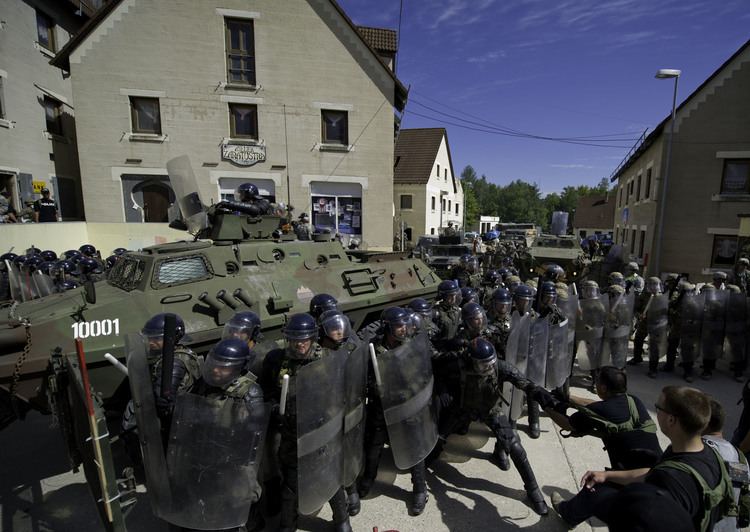
The Contact Group countries have said publicly that KFOR will remain in Kosovo to provide the security necessary to support the provisions of a final settlement of Kosovo's status.
Structure
KFOR contingents were originally grouped into 4 regionally based multinational brigades. The brigades were responsible for a specific area of operations, but under a single chain of command under the authority of Commander KFOR. In August 2005, the North Atlantic Council decided to restructure KFOR, replacing the four existing multinational brigades with five task forces, to allow for greater flexibility with, for instance, the removal of restrictions on the cross-boundary movement of units based in different sectors of Kosovo. Then in February 2010, the Multinational Task Forces became Multinational Battle Groups and in March 2011, KFOR was restructured again, into just two multinational battlegroups; one based at Camp Bondsteel, and one based at Peć.
Contributing states
At its height, KFOR troops numbered 50,000 and came from 39 different NATO and non-NATO nations. The official KFOR website indicated that in 2008 a total 14,000 soldiers from 34 countries were participating in KFOR.
The following is a list of the total number of troops which have participated in the KFOR mission. Much of the force has been scaled down since 2008, and so current numbers are reflected here as well:
KFOR Commanders
- Mike Jackson (United Kingdom, 10 June 1999 – 8 October 1999)
- Klaus Reinhardt (Germany, 8 October 1999 – 18 April 2000)
- Juan Ortuño Such (Spain, 18 April 2000 – 16 October 2000)
- Carlo Cabigiosu (Italy, 16 October 2000 – 6 April 2001)
- Thorstein Skiaker (Norway, 6 April 2001 – 3 October 2001)
- Marcel Valentin (France, 3 October 2001 – 4 October 2002)
- Fabio Mini (Italy, 4 October 2002 – 3 October 2003)
- Holger Kammerhoff (Germany, 3 October 2003 – 1 September 2004)
- Yves de Kermabon (France, 1 September 2004 – 1 September 2005)
- Giuseppe Valotto (Italy, 1 September 2005 – 1 September 2006)
- Roland Kather (Germany, 1 September 2006 – 31 August 2007)
- Xavier de Marnhac (France, 31 August 2007 – 29 August 2008)
- Giuseppe Emilio Gay (Italy, 29 August 2008 – 8 September 2009)
- Markus J. Bentler (Germany, 8 September 2009 – 1 September 2010)
- Erhard Bühler (Germany, 1 September 2010 – 9 September 2011)
- Erhard Drews (Germany, 9 September 2011 – 7 September 2012)
- Volker Halbauer (Germany, 7 September 2012 – 6 September 2013)
- Salvatore Farina (Italy, 6 September 2013 – 3 September 2014)
- Francesco Figliuolo (Italy, 3 September 2014 – 7 August 2015)
- Guglielmo Luigi Miglietta (Italy, 7 August 2015 – 1 September 2016)
- Giovanni Fungo (Italy, 1 September 2016 – present)
Note: The terms of service are based on the official list of the KFOR commanders and another article.
Kosovo, peacekeeping and human trafficking
Since the establishment of the United Nations Mission in Kosovo (UNMIK) in 1999, according to some international organizations Kosovo became a major destination country for women and young girls trafficked into forced prostitution, in part as a result of the presence of peacekeeping forces. According to Amnesty International, most women trafficked into Kosovo from abroad are from Moldova, Romania, Bulgaria and Ukraine.
KFOR fatalities
Since the KFOR entered Kosovo in June 1999, 168 NATO soldiers have been killed, mostly in accidents.
On 19 October 2004, it was confirmed that 115 NATO soldiers had been killed during the operation. After that 50 more NATO soldiers were confirmed to have died, including 42 Slovak soldiers in a military plane crash in Hungary.
The fatalities by country are: 42 Slovak, 26 German, 34 unidentified, 18 American, 12 Russian, 8 British, 3 Swedish, 6 Italian, 5 French, 5 Polish, 4 Spanish, 3 Ukrainian, 2 Turkish, 1 Austrian, 1 Danish, 1 Dutch, 1 Greek, 1 Hungarian (natural death), 1 Norwegian, 1 Romanian, 1 Slovenian, 3 Swiss, 1 Lithuanian, 1 United Arab Emirates and 1 Portuguese.
Eight UNMIK police officers have been killed in Kosovo since 1999, in addition to the KFOR fatalities. The fatalities by country are: 3 American, 1 Indian, 1 Jordanian, 1 Nigerian, 1 Ghanaian and 1 Ukrainian police officer.
Events
After the 2008 Kosovo declaration of independence the commander of NATO forces in Kosovo said on 20 February 2008 that he did not plan to step up security in the tense north despite Kosovo Serbs forcing the temporary closure of two boundary crossings between Kosovo and uncontested Serbia.
In July 2011, following the Kosovo Police's attempts to seize two border outposts and consequent clashes that followed, KFOR troops intervened.
In 2013, KFOR was involved in a rescue operation of the last restaurant bears in Kosovo. The bears are now kept at the Bear Sanctuary Prishtina.
